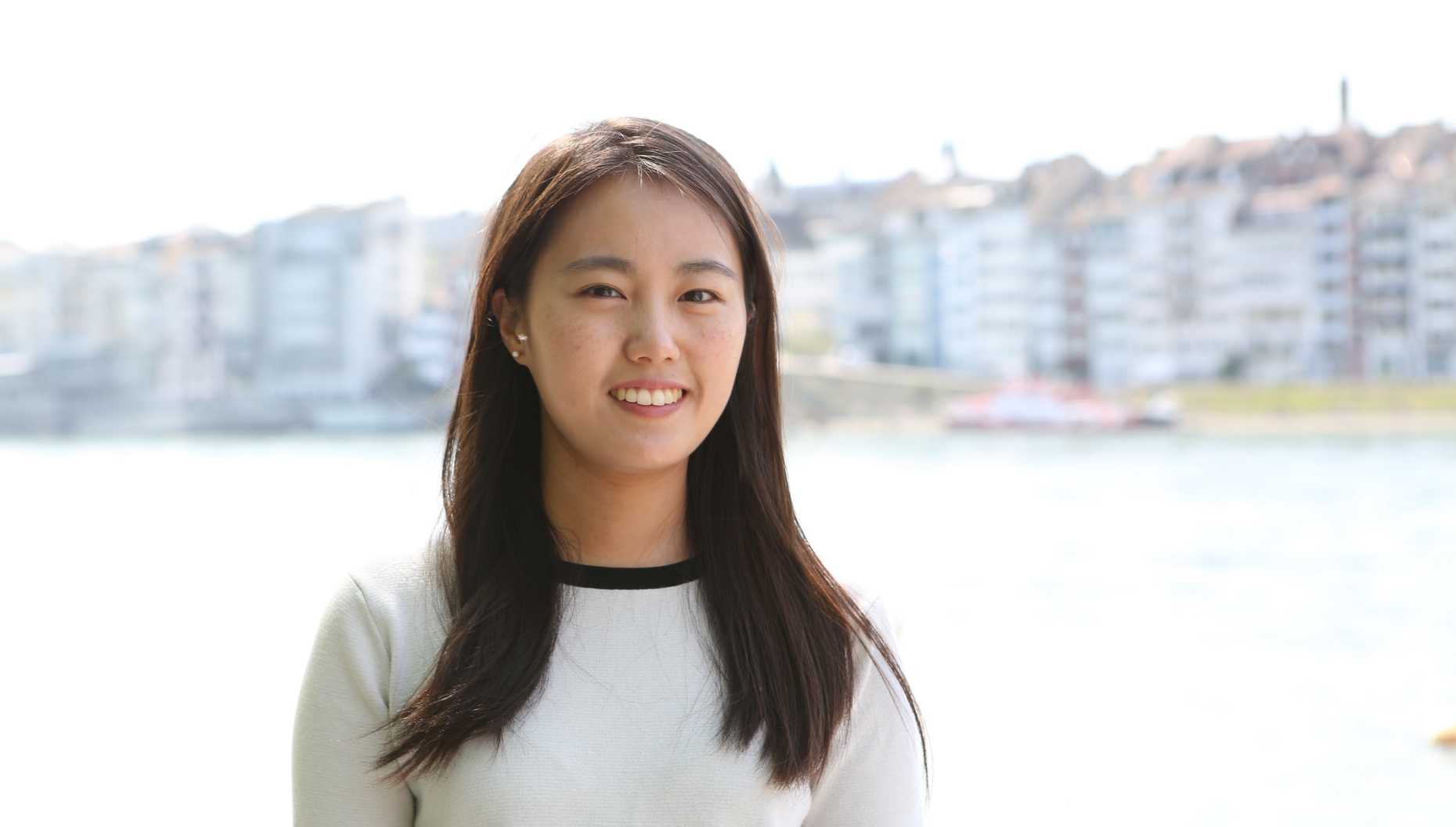Meet Minkyoung Lee and her fascination for spatial transcriptomics
Being a developmental biologist from South Korea, the postdoctoral researcher in the lab of Andreas Moor aims to develop de novo methods to analyze how the spatial position of RNAs is related to its function in homeostasis and pathophysiology, e.g. cancer. Despite starting during Covid-19 times she already established links with several D-BSSE labs and other expert groups in and around Basel.

What did you know about D-BSSE before you came here, and what was your motivation to come to ETH Zurich?
I did my PhD in Biozentrum, University of Basel so I already had many contacts at D-BSSE through many different lectures and seminars. My major motivation to work here is, of course, the projects that I developed with Andreas Moor. He is a young and passionate Principal Investigator. I love to work with him and my lab colleagues, who are all very inspiring people. Beyond that I am happy that I am in an innovative environment and exposed to extensive, cutting-edge techniques and amazing experts.
What were your expectations, and were your expectations met since you arrived in Basel?
I like Basel. Many institutes and labs are very close-by and easily reachable. I already built a strong collaboration with Dr. Sawh in the Mango lab at Biozentrum. Internally, I am also getting a lot of support from the D-BSSE labs led by Dagmar Iber, Martin Fussenegger, Randall Platt and Sai Reddy. However, due to Covid-19, I was not able to see many people outside of the lab face-to-face. Hopefully, I can enjoy more interactions between researchers and students here once the pandemic has subsided.
What were your first impressions?
Again, due to Covid-19, I couldn’t experience D-BSSE much in person, so, hopefully, 2021 will be better. However, I would like to acknowledge HR administration and department services (Brigitta, Merete, Cindy and Carolin) which helped me with the logistics related to working here. Also, many of the core facility people are very nice and helpful, which surprised me positively and is much appreciated. I feel like I will be able to focus more on my research at D-BSSE thanks to their support.
Which research will you pursue at D-BSSE?
I am working on spatial transcriptomics at the Systems Physiology lab led by Andreas Moor. It is a burgeoning field, and I am fascinated to understand how cell polarity sets in the transcriptional level, which proteins mediate this process, and whether it can be employed to understand colorectal cancer (CRC) development, which is part of my project for the SNF Spark grant. In more detail, I want to develop de novo methods to analyze how the spatial position of RNAs is related to its function in homeostasis and pathophysiology e.g. cancer. I am using proximity biotinylation assays, single molecule FISH (and multiplexed FISH), mini-guts (to resemble in vivo cellular polarity) and single cell analysis. I will also try the massively parallel reporter assay (MPRA) to find the essential ‘zip code’ for RNA localization. Fortunately, a large part of my project is funded by the ERC this year (big thanks to Andreas and wonderful people at the Moor Lab)! Hopefully, in the near future, I can share and discuss my work with D-BSSE scientists in-person – if not, we’ll have to stick with virtual meetings.
Which hobby or personal interests do you hope to pursue in Switzerland?
It is a bit cliché: Skiing. I thought I was good at skiing before I went to the Alps. I need to practice.
Many thanks, Minkyoung, and good luck with your research!
Minkyoung Lee did her bachelor studies in Seoul, South Korea. When she had an opportunity to study abroad she decided to spend one semester in Switzerland. At that time she did not know much about Switzerland besides the Alps, Swiss cheese and chocolate. Her first lab internship at the University of Bern made her realize how much she enjoyed biological research and the lab environment. This experience motivated her to continue her studies in molecular cell biology at the University of Geneva. She then received a Siemens PhD fellowship and was offered a chance to do her PhD in the lab of Markus Affolter at the University of Basel. During her PhD, she grew her skills as a developmental biologist, exploring the angiogenesis process (new vessel development from existing vessels) and deciphering the underlying mechanisms of vasculature cell rearrangement, and also becoming an expert in in vivo live imaging. Currently, she is working on spatial transcriptomics at the Systems Physiology lab led by Andreas Moor.